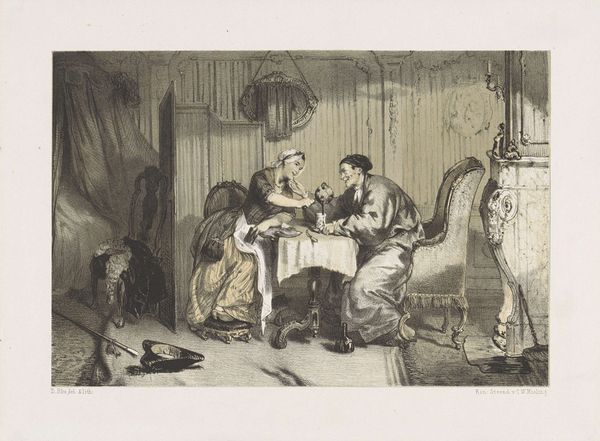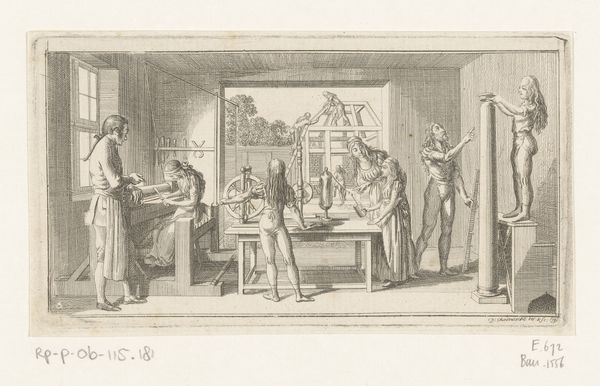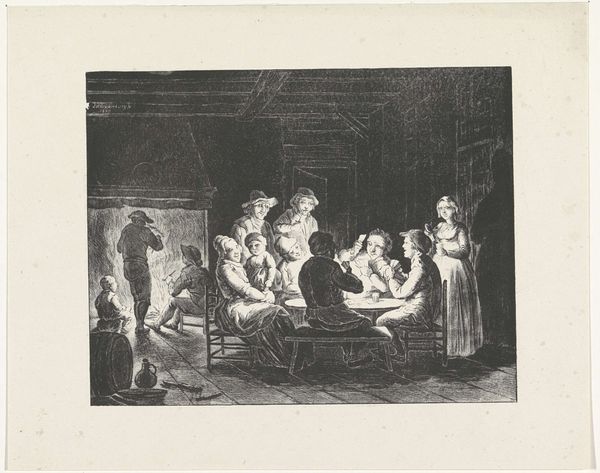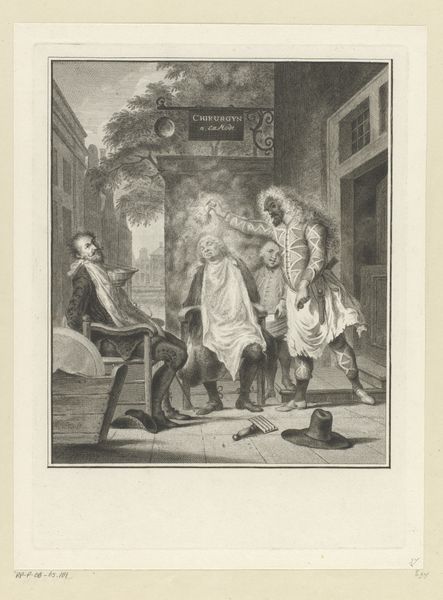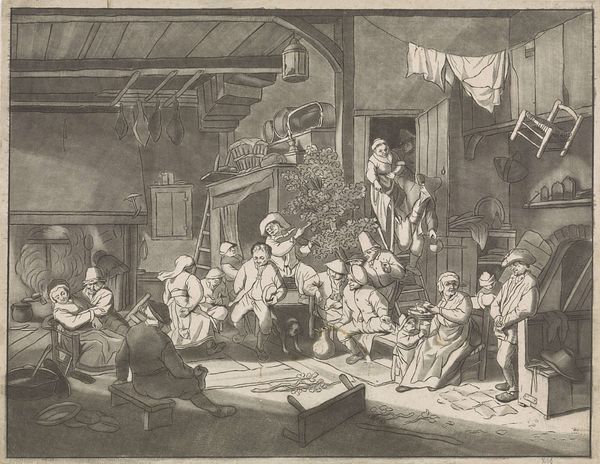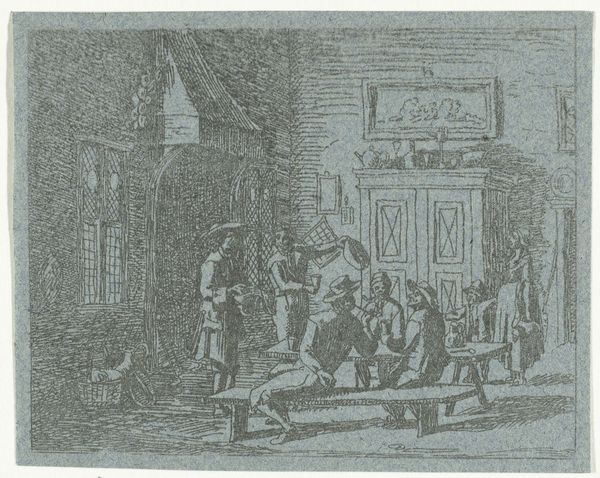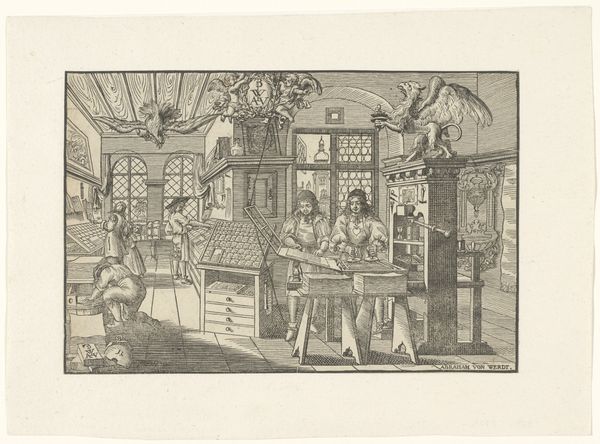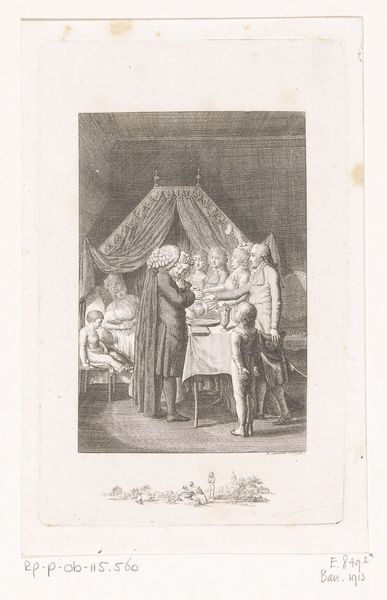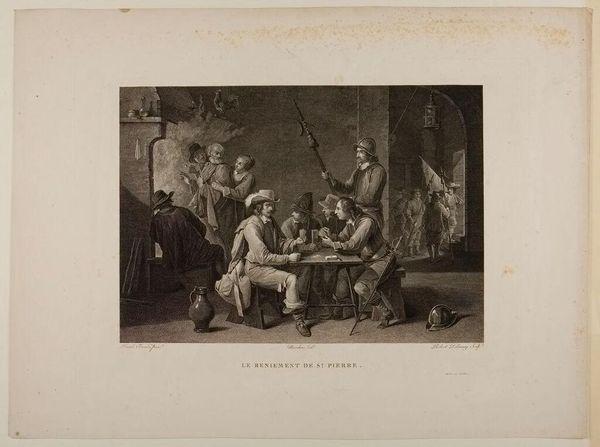
print, engraving
#
narrative-art
#
baroque
# print
#
figuration
#
line
#
genre-painting
#
engraving
Dimensions: height 44 mm, width 73 mm
Copyright: Rijks Museum: Open Domain
Curator: I find the scene both fascinating and unsettling. The dramatic lighting and the appearance of a demon suggest something supernatural afoot. Editor: Indeed. Let’s delve into this intriguing engraving, “Tovenaars aan een tafel en de verschijning van een demon,” or “Wizards at a Table and the Appearance of a Demon,” which dates roughly from 1683 to 1783. It resides here in the Rijksmuseum. What strikes me is the intricate use of line to create such detailed textures and tones. The artist has truly mastered the medium. Curator: From a historical perspective, these types of images were often used to demonize those accused of witchcraft. Visual propaganda of sorts, that fed into societal anxieties. Editor: Note how the scene is composed. A table is laden with objects, including a demonic figure appearing above. What meaning can we gather from its symbolic presence in this otherwise quotidian scene? Curator: Precisely. It places this intimate dinner scene squarely within a larger framework of belief, fear, and perhaps even persecution during this period. The presence of wizards indicates intellectual deviancy—aligned at the time to atheism or defiance against God, therefore the devil. Editor: But is that so different today? Doesn't any alternative thinking find itself challenged within social conventions, often aggressively so? Curator: In some social settings, regrettably, yes, it’s clear there are some rather entrenched behaviors that make it hard for different and newer schools of thought to be entertained. This type of close-mindedness finds itself represented in older political movements. It’s this same line of critical and careful questioning, ironically, that fueled progress from superstition in past generations. Editor: What you have highlighted is invaluable—that even visual elements work not as decoration, but as symbols. Perhaps the table itself symbolizes a gathering of knowledge, the glasses clarity of the intellect, and the arrival of a devil a sign that anything that questions religion or state is evil or untrustworthy. Curator: Ultimately, this engraving reveals the precarious social position of intellectuals in previous eras. It allows us to understand how fear, or lack of intellectual courage, manifests culturally. Editor: So the power of observation, not as description alone, but as an act of insight!
Comments
No comments
Be the first to comment and join the conversation on the ultimate creative platform.
